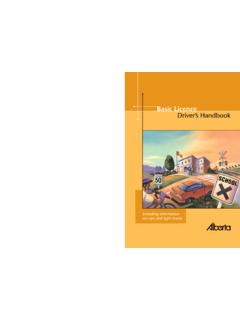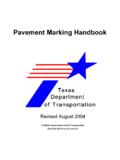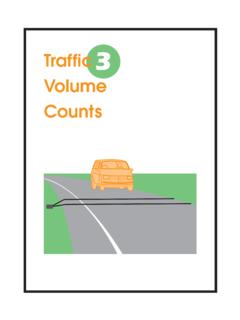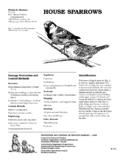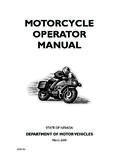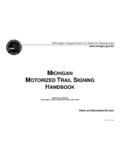Transcription of Tennessee Traffic Laws Relating to Bicycles
1 Suite 403, City County Building 400 Main Street Knoxville, Tennessee 37902 Telephone: 865 215-2500 Fax: 865 215-2068 E-mail: Site: Traffic laws Relating to BicyclesA HANDBOOK FOR MOTORISTS & BICYCLISTSREFERENCES Tennessee Code, (all citations in this document are from the Tennessee Code, as of January 2006) Florida Bicycle Law Enforcement Guide, June 2004 , December 2005 About the Knoxville Regional Bicycle Program The Knoxville Regional Transportation Planning Organization (TPO) coordinates a comprehensive, multi-modal transportation planning process for the Knoxville urban area.
2 Members include: Cities of Alcoa, Knoxville and Maryville, Town of Farragut, Lenoir City, Blount, Knox, Loudon, and Sevier Counties, Tennessee Department of Transportation, and East Tennessee Development a component of the TPO, the Knoxville Regional Bicycle Program envisions a convenient, effi cient transportation system where people can bike safely to all destinations. Bicycling is a great way to get around town. It saves money, improves air quality and is good exercise. The purpose of the Bicycle Program is to integrate bicycling into the transportation system.
3 The program works with all City and County departments within the TPO boundary to implement the Regional Bicycle , communities are realizing they cannot build their way out of congestion. They must look to other solutions, such as transit, carpooling and bicycling. A healthy transportation system provides safe, convenient choices. Improving bicycling conditions provides alternatives for the increasing numbers of citizens who can t afford, don t want to or are physically unable to drive motor vehicles. Bicycling is the healthy transportation choice.
4 Regular exercise helps prevent heart disease, osteoporosis, diabetes, colon cancer, depression and many more diseases. Obesity has increased at alarming rates, even in children. Bicycling to work, school or for errands is an easy way to make exercise a part of your daily more information, please visit our web site at 1 IntroductionTr a ffi c rules exist to improve everyone s safety and are based on collective experience. Most crashes can be avoided if both bicyclists and motorists follow the rules of the road. Th e Knoxville Regional Bicycle Program reminds both motorists and bicyclists to remember a few things when out on the Individual drivers can make the roads safer by driving at reasonable speeds, expecting and slowing for bicyclists and pedestrians, and leaving plenty of room when passing.
5 Remember that if bicyclists and pedestrians were not out walking and riding, they would probably be out driving, creating more traffi c congestion!When you pass a bicyclist on the street, remember: Bicyclists are, by state law, drivers of vehicles. Bicyclists have the same rights as other vehicle drivers to be on the road. Giving 3 feet is the law in Tennessee , but more than 3 feet is needed if speed limits are above 40 mph. If bicyclists squeeze over to the right, they endanger themselves. They end up facing debris on the road and bad storm drain grates.
6 Common sense and the law allow bicyclists to ride as far to the left of such roadside hazards as needed for safety. If the lane is too narrow for the motorist to safely pass the bicyclist within the lane, while still allowing the cyclist a safe buffer-distance from both roadside hazards and the passing vehicle, the law allows the bicyclist to take the entire lane. This means the motorist has to wait behind for a safe chance to pass. Remember that it is easier to pass a person on a bicycle than that same person driving an Traffi c SignalsAt some signalized intersections, an electrical circuit with loops embedded in the pavement is used to detect vehicles waiting for a green light.
7 Th e light will not turn green until the sensor detects metal, indicating the presence of a vehicle. Some sensors are not sensitive enough to detect the metal in a bicycle, and some Bicycles are made of carbon fi ber and do not contain enough metal to be detected. Th e most sensitive position for a bicycle to be detected is directly over the pavement cut. An unresponsive loop should be reported to the local traffi c engineering offi ce. A new state law has made it legal for motorcycles to proceed through a red light if the sensor does not detect them, but the law did not include Bicycles .
8 In the City of Knoxville, some detectors have three pavement cuts and bicyclists should position their Bicycles over the center one - in the center of the travel lane. Aggressive Driving/HarassmentA few motorists verbally threaten bicyclists, or even throw objects at them. Bicyclists are often not clear on what to do in this situation. If you are physically threatened by a driver or passenger s actions, note the license plate number and a description of the vehicle and the harasser, and call the appropriate law enforcement agency as soon as possible.
9 AssaultA person commits assault who: (1) Intentionally, knowingly or recklessly causes bodily injury to another; (2) intentionally or knowingly causes another to reasonably fear imminent bodily injury; or (3) intentionally or knowingly causes physical contact with another and a reasonable person would regard the contact as extremely off ensive or provocative. If the driver or passenger assaults you with an object, that would be simple assault. If they use the vehicle to try to run you off the road or hit you, that is considered aggravated assault because the vehicle is a weapon.
10 Although it is legal, bicycling on sidewalks is not recommended except for young children. Motorists are not looking for or expecting bicyclists on a sidewalk, which creates dangerous situations every time the bicyclist crosses a driveway or intersection. Many people assume riding on sidewalks is safer than on the road, but studies show that assumption to be false. 2 BICYCLISTSFor bicyclists, safety depends more on how you ride rather than where. Many studies show that bicyclists who practice Vehicular Cycling, following the rules of the road and using front and rear lights starting at dusk, are statistically as safe as motorists and up to twenty times safer than bicyclists who don t follow road rules or use lights.


